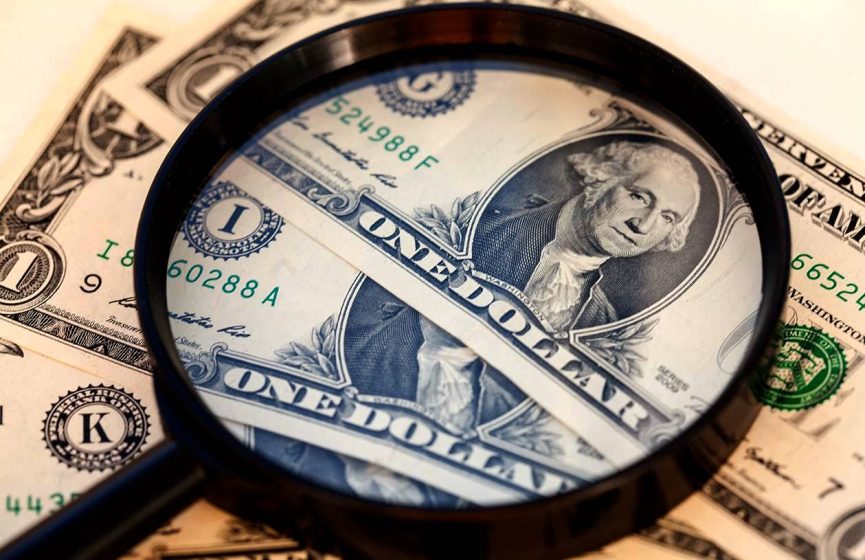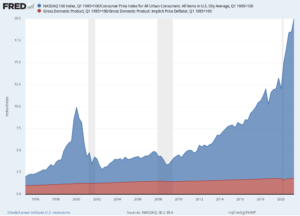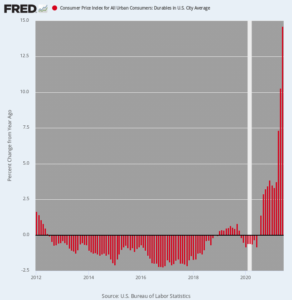
Before Alan Greenspan fell off the wagon in pursuit of government power, position, praise, and riches, in his 1966 speech, “Gold and Economic Flexibility,” he stated the following:
In the absence of the gold requirement, there is no way to safeguard cost savings from confiscation through inflation. There is no safe store of worth … The financial policy of the well-being state needs that there be no way for the owners of wealth to safeguard themselves.
This is the worn-out secret of the welfare statists’ tirades versus gold. Deficit spending is just a scheme for the confiscation of wealth. Gold stands in the way of this insidious procedure. It stands as a protector of property rights. If one grasps this, one has no difficulty in understanding the statists’ antagonism towards the gold standard. (Focus mine.)
When Greenspan spoke in 1966, the public financial obligation was simply $325 billion and totaled up to 40% of GDP. And that figure had actually been progressively falling from the WWII peak of 125%.
No more. The general public financial obligation now requirements at $28.1 trillion and 127% of GDP and is increasing at breakneck speed.
What occurred was that as soon as the Fed-fueled tech boom of the 1990s ran out of gas with the dotcom bust in the spring of 2000, commercial production in the United States got pinned to the flat-line.
During the very first duration in between 1972 and 2000 the Fed’s balance sheet grew by about $500 billion, or $18 billion annually.
But during the last 21 years ever since, the Fed’s balance sheet has skyrocketed by $7.6 trillion, or $362 billion per year.
When the reserve bank injects 20 times more fiat credit into the economy each year, it needs to go somewhere.
As significantly portrayed by the chart below, the stock exchange became the excellent monetary sump that absorbed the inflationary tide.
Inflation-adjusted NASDAQ 100 Versus Real GDP, 1995– 2021

The stock market recorded a staggering$38.3 trillion gain in worth throughout the last 25 years that was well more than double the $14.5 trillion rise of small GDP, implying that the stock exchange is now capitalized at 200% of national income.
The value of the stock exchange increased by 6.3 X throughout the last quarter-century of money-printing insanity, while nationwide earnings increased by only 2.7 X.
What has driven the marketplace to existing nose-bleed heights is a simply central bank-fueled speculative mania and profits-to-earnings ratio (P/E) numerous growth that lacks any possible structure.
But this can not cause anything but a $90 trillion global stock exchange bubble collapse when the reserve banks are finally forced to throw in the towel on their “transitory inflation” baloney.
It also results in years of customer inflation.
YoY Change in CPI for Durable Goods, 2012– 2021

Editor’s Note: Did you understand that United States government has let loose the most dangerous experiment in its whole history?
In fact, what’s been let loose is trillions of dollars of stimulus without any end in sight.
When any federal government goes on an uncontrollable money printing spree it affects everyone.
That’s specifically why, NY Times best selling author Doug Casey just released this immediate brand-new video on the most significant imminent hazard and what you can do about it.

